You’ve probably tried mixing paints to make new colors (i.e. blue + red = purple). But did you know that you can also unmix colors? Give it a try and learn about chromatography, a science technique for separating mixtures (like the colors you see here). You’ll also learn about capillary action and how water can be “sticky.” With a little help from Ziploc® brand bags and a set of markers, we can become "color scientists" and unravel the mystery of color mixing.
Learn More:
Chromatography is a technique for separating components of a mixture. In this project, we use chromatography to separate the colors in washable marker inks, using water. Some liquids, like water, stick to themselves and to other things. This stickiness can cause water to pull itself up a thin tube or other space. This is called capillary action. And thanks to capillary action, the water sticks to the paper fibers in the coffee filter and travels up, bringing the colors up with it. As the water moves, you’ll see how the colors travel at different speeds, so fast-moving colors pull ahead while the slow-moving colors stay behind. Try this experiment with different colored markers to see their component colors.
Connections with Next Generation Science Standards (NGSS) |
|
|---|---|
Matter and its Interactions 2-PS1-1 . Plan and conduct an investigation to describe and classify different kinds of materials by their observable properties. |
Conduct an investigation to describe and classify marker colors by their component colors. |
MATERIALS
- Scissors
- Coffee filter
- Washable markers
- 1/8 cup water
- Magnets or tape
- Permanent markers (soft felt-tip) (optional)
STEPS
- 1 Gather your materials.
- 2 Use the scissors to cut the coffee filter into a square shape that will fit inside the Ziploc® brand sandwich bag .
- 3 Using a washable marker, draw a horizontal line across the filter about one inch from the bottom. Try starting with black, brown, or gray!
- 4 Fill the bag with 1/8 cup water. The water should be about a half inch from the bottom of the bag when held upright.
- 5 Place the marked-up filter into the bag, so that the bottom of the filter is submerged in water. The marker line should be above the water level. Keeping the bag upright, mount it on a wall or refrigerator with tape or magnets.
- 6 Within 20 to 30 minutes, you’ll start seeing the water move up the paper. As a capillary action takes place, the component colors that make up the marker color will separate. This is chromatography in action! Once you’ve achieved an effect that you lie, carefully remove the filer. Pour out the water and allow the filter to dry. Repeat the process with different colors and check out how each color separates!
- 7 We used these chromatography results to make art from science! Place them back in the now dry Ziploc® brand sandwich bags . We used a permanent marker to create fun scenes inspired by the color, like an underwater oceanscape and an outer space adventure!









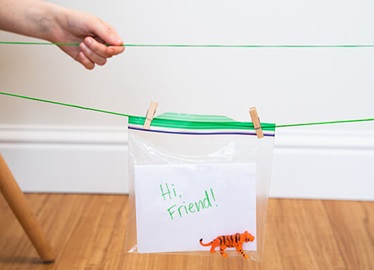

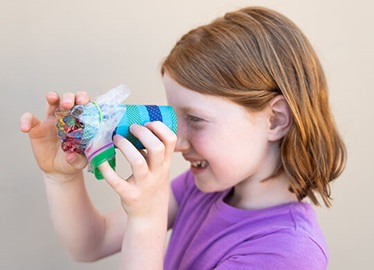
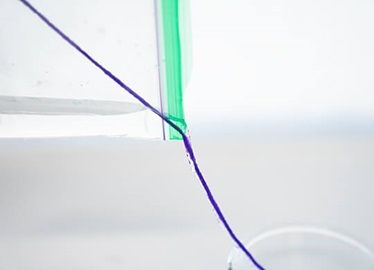
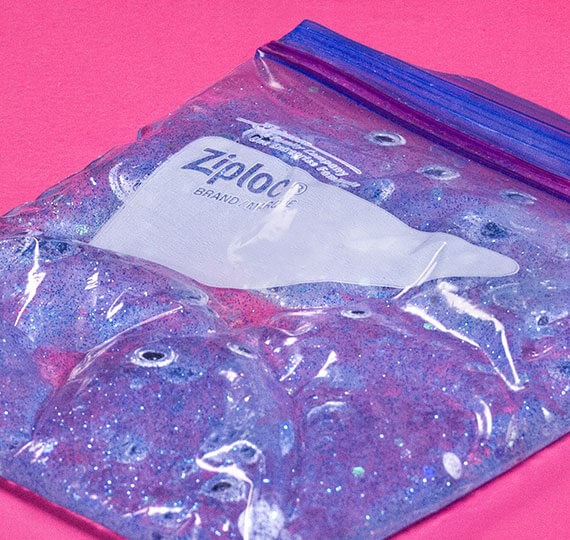
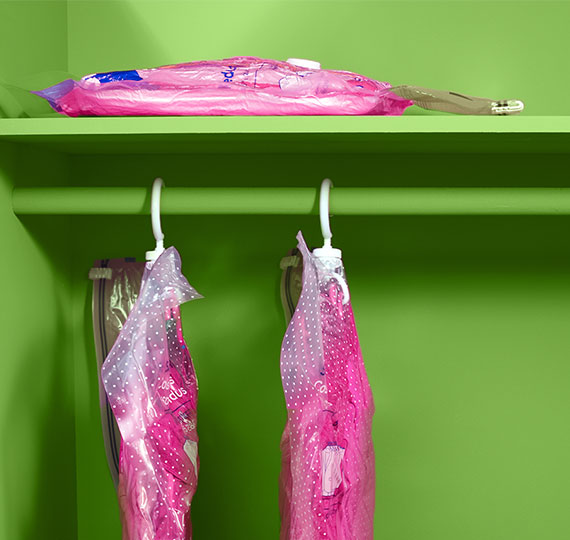
SHARE